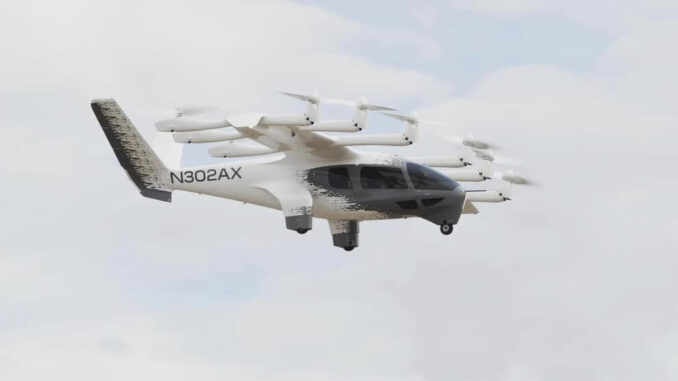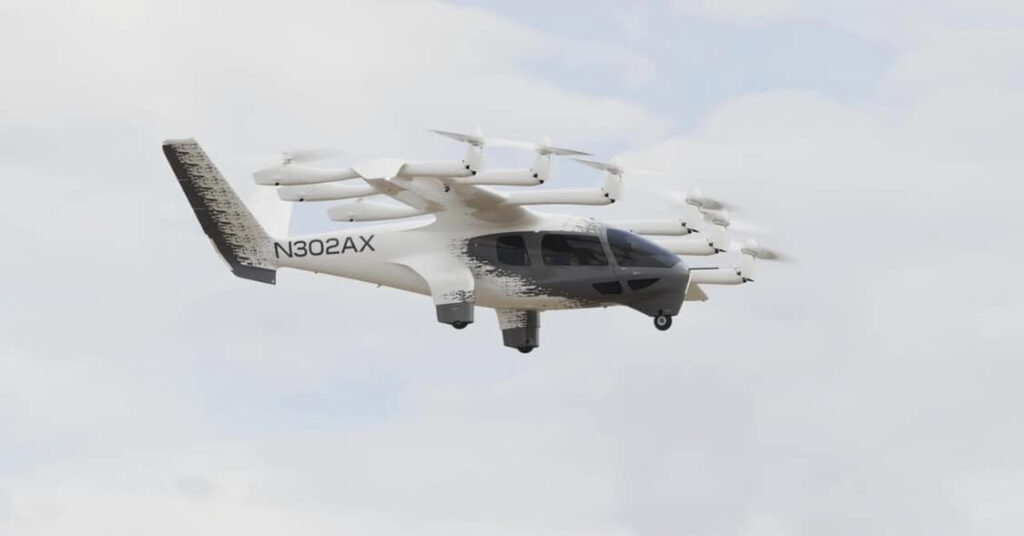
Archer Aviation delivers its first eVTOL Midnight to the US Air Force for military evaluation under a €142m contract.
Archer Aviation has delivered its first eVTOL (electric vertical take-off and landing) Midnight aircraft to the US Air Force under the AFWERX Agility Prime contract, worth up to €142 million. This delivery marks a crucial milestone in the military evaluation of the aircraft, which has passed military airworthiness assessment, ensuring its readiness for government-led flight testing. The US Air Force is currently testing the Midnight for missions such as medical evacuation, cargo transport and ISR (intelligence, surveillance and reconnaissance) operations. This partnership promises to revolutionise operational capabilities with safer, cheaper and quieter technology.
Delivery of the first eVTOL Midnight to the US Air Force
Archer Aviation has reached a key milestone with the delivery of its first eVTOL Midnight to the US Air Force under the AFWERX Agility Prime contract. The contract, worth up to €142 million, is designed to explore potential military applications for electric vertical take-off and landing aircraft. The Midnight, designed to meet the specific needs of military missions, was handed over to the USAF at a ceremony in Salinas, California.
The handover follows the DoD’s acceptance of the Midnight’s military airworthiness evaluation, which is an essential validation of the aircraft’s ability to participate in flight tests for military missions. This milestone is not only a breakthrough for Archer Aviation, but also for the entire eVTOL sector, which is seeing the first concrete expression of its military ambitions.
Technical features and innovations of the Midnight
The Midnight boasts a number of advanced technical features that make it a promising candidate for military missions. The main asset of this eVTOL is its electric propulsion system, which enables it to carry out vertical take-offs and landings with no direct greenhouse gas emissions. This technology represents a significant advance on traditional internal combustion engine helicopters, offering a quieter, safer and more economical alternative.
The Midnight’s flight autonomy is another strong point. Although eVTOLs generally have a limited range compared with conventional aircraft, the Midnight has been designed to maximise its fuel efficiency while maintaining sufficient payload capacity for critical missions, such as transporting medical supplies or providing logistical support. It is estimated that the aircraft can carry up to 450kg** over a distance of 160km** on a single payload, making it suitable for short- to medium-range missions.
The Midnight’s innovative design, in partnership with automotive industry giant Stellantis, also incorporates advanced technical solutions in flight control and power management, optimising performance while minimising operating costs.

Military application potential and USAF evaluation
The US Air Force’s military evaluation of the Midnight focuses on a series of simulated missions to test the aircraft’s capabilities in real-world scenarios. Among the applications envisaged, medical evacuation in conflict zones is a priority. The Midnight could offer a fast and discreet solution for transporting casualties from hard-to-reach areas, thanks to its ability to take off and land vertically in restricted terrain.
Cargo transport is another critical application. In modern theatres of operations, the speed and flexibility of logistics transport are crucial. The Midnight could fill the current gap by offering a fast and flexible transport capability, particularly useful for urgent deliveries to unprepared areas.
Finally, ISR (intelligence, surveillance and reconnaissance) missions could benefit from the eVTOL’s discretion and manoeuvrability. Its electric propulsion allows quieter operations, reducing the risk of detection by the enemy during reconnaissance or surveillance missions. The AFRL (Air Force Research Laboratory) is playing a key role in this evaluation phase, ensuring that the aircraft meets the rigorous requirements of modern military operations.
Strategic consequences of integrating eVTOLs into the armed forces
The introduction of eVTOLs like the Midnight into the armed forces could transform the way military operations are conducted, particularly in urban environments and areas where access is limited. These aircraft offer a more flexible and less expensive alternative to conventional helicopters and other aircraft, while reducing the carbon footprint of military operations.
In strategic terms, the use of eVTOLs could also improve the armed forces’ ability to respond rapidly to emergency situations, such as evacuations or rapid deployments. Their ability to deploy without heavy airport infrastructure is a major asset, especially in situations where airstrips are not available or practicable.
In addition, the integration of eVTOLs into the armed forces could encourage wider adoption of these technologies in the civil and commercial sectors, increasing confidence in their reliability and effectiveness. This could ultimately lead to an increase in mass production and a reduction in unit costs, making these technologies more accessible to other sectors.
Implications for the aerospace industry and civil-military collaboration
The collaboration between Archer Aviation and the USAF, as well as the partnership with Stellantis, illustrates the growing importance of alliances between the private sector and the armed forces for the development of cutting-edge technologies. This model of cooperation accelerates innovation while sharing the risks and costs associated with research and development.
For the aerospace industry, the successful integration of eVTOLs into military applications could open up new markets and encourage other players in the sector to invest in the development of these technologies. The benefits of this collaboration could also translate into technological advances in other areas, such as energy management and autonomous control systems, which would benefit the industry as a whole.
In addition, the validation of eVTOLs by military entities could boost the confidence of regulators and civilian users, facilitating their adoption in sectors such as urban transport, emergency services and delivery operations. This dynamic could accelerate the advent of a new era in air mobility, in which eVTOLs would play a central role.
War Wings Daily is an independant magazine.